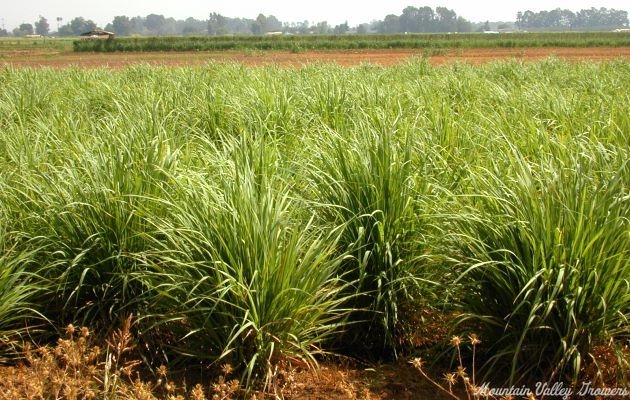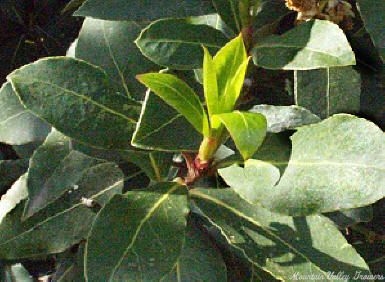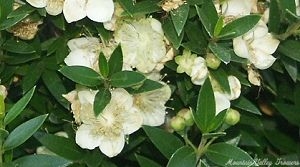Why we chose these plants
Imagine yourself in a garden, a very informal garden, really more of a forest or a rocky outcropping. Now imagine you had to survive on what was around you. It is likely you would learn to make use of everything. The plants around you would be of extreme importance and influence every aspect of your life. They would feed you, heal you, make you cleaner and give you joy.
It is easy to understand the great value ancient people placed on plants. Herbs were everywhere, just as they are now where the land is undisturbed. It took great wisdom to define which plants were for what purpose. The greatest landscapes ever designed were woven with an abundance of herbs. If we filled our gardens with Mediterranean Herbs, we would have a resemblance of times long ago.
In essence, all herbs are Biblical. However, there are some specific plants mentioned throughout the Bible and it is those that we have come to think of as meaningful to Biblical times.

Chicory
“and they shall eat the flesh in that night, roast with fire, and unleavened bread, and with bitter herbs they shall eat it.” Exodus 12:8
Bitter Herbs are mentioned often in the Bible. Considering the quality of their food, these digestive aids were probably very necessary for good intestinal bacteria and health. It is thought, by the interpreters of the Bible, that many herbs were used in this manner, including dandelion and sorrel. Chicory, with its cornflower blue flowers, can be used many ways. The young leaves are excellent in salad. They can be steamed or blanched and used as greens by themselves or with other nutritious green leaves. The root can be can be ground and added to coffee.

Lemon Grass
“Take thou also unto thee principal spices, of pure myrrh five hundred shekels, and of sweet cinnamon half so much, even two hundred and fifty shekels, and of sweet calamus two hundred and fifty shekels,” Exodus 30:23
Sweet smelling Calamus refers to the many aromatic grasses found growing in abundance in the Holy Land, of which Lemon Grass is one. In this scripture the Lord delivers instructions to Moses for the proper way to make and use Holy Oil. So valued was this oil that perfume was not even to be made in the same way.
Lemon Grass is an essential ingredient in many Asian dishes. After a good size clump of Lemon Grass has developed, pieces can be broken off at the base of the clump for cooking. The white fleshy part at the base of the reed is the part that gives a sharp lemon tang to soups and stir fry. It is a tender plant and should be protected or brought in where winters go below 10.

Greek Bay
“I have seen the wicked in great power, and spreading himself like a green bay tree.” Psalms 37:35
Evergreen, sturdy and fragrant; surely these were contributing factors to the greatness bestowed on Bay throughout history. David assigned the virtue of prosperity to the tree. This meaning has transferred itself to our present society with the conferring of a BA degree or a Baccalaureate degree. Even so, we no longer value Bay as a headdress or as a symbol. It is the spicy aroma and pungent flavor we love today. Bay is hardy only to about 15 degrees, but it is not too difficult to grow it in a pot. Even though in the Mediterranean, Bay may grow 40 or 50 feet, it takes a very long time to do so here in the United States, making it a suitable container plant. Leave the pot outside during summer and bring it inside for the winter. It is well worth whatever effort it takes to have this shrub contributing to our herb gardens, and our kitchen tables.

Egyptian Mint
But woe unto you, Pharisees! for ye tithe mint and rue and all manner of herbs, and pass over judgment and the love of God: these ought ye to have done, and not to leave the other undone.” Luke 11:42
That Mint was tithed at all shows the value the Pharisees placed upon this herb. Imagine determining what one tenth of your mint crop was! Mint was valued for its fresh aroma and sweet taste and often used to flavor meat. Also an important “strewing” herb, mint stems were hung in doorways and thrown on dirt floors to mask the effects of inadequate sanitation. Scholars disagree on which mint was actually the mint of the Bible, but this is a nice one from the same region. There were probably many mints then as there are today. It freely crosses and produces great differences from this wild hybridization.

Dwarf Sweet Myrtle
“Instead of the thorn shall come up the fir tree, and instead of the brier shall come up the myrtle tree.” Isaiah 55:13
The symbol of divine generosity. According to one interpretation when “Adam was expelled from Paradise he was allowed to take with him wheat, chief of foods,; the date, chief of fruits; and the myrtle, chief of scented flowers”. The bark and roots are used to tan the finest Turkish and Russian leather to which it imparts a delicate scent. The Myrtle variety included in your garden is a dwarf suitable for hedges, topiaries and containers.

Syrian Oregano
“Purge me with hyssop, and I shall be clean: wash me, and I shall be whiter than snow.” Psalms 51:7
Because common Hyssop (Hyssopus officinalis) is not native to the Mediterranean area, much debate has ensued over which plant was referred to as Hyssop. It may have even been several different plants used for different and varied purposes. Syrian Oregano however seems to most adequately fill many of the references to hyssop found in the bible. It was often gathered in bunches and used as a brush or sprinkler for purification rituals. It was surely enjoyed, as it is today, for its excellent flavor. It is still widely used in the Middle East as an ingredient in the spice blend Zatar. It has one of the strongest tastes of all the Oreganos and can be used fresh or dried on pizza, eggs, baked in bread or cooked in sauces.
Adam, Cain, Luke, Solomon and Paul, these were only a few of the biblical gardeners. In the Bible, they discuss grafting and root stock and the proper way of taking cuttings. Sounds a lot like what we struggle with and strive to perfect today.






